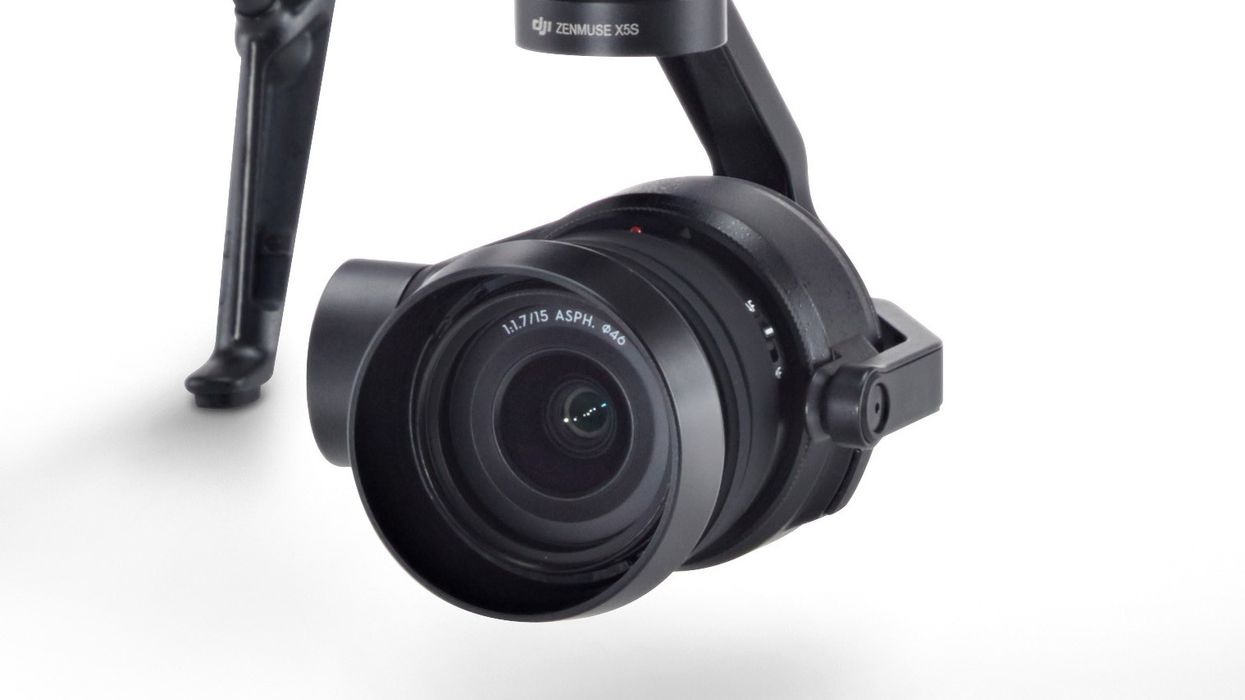Introducing the DJI X5S
The New X5S from DJI makes the Inspire 2 a true cinematic tool.

In parts one and two of this series, we made the case that the DJI Inspire 2 was designed with the professional filmmaker in mind—and the design and functionality of X5S camera further reflects that. With higher resolution and dynamic range than ever before seen in a DJI camera, the X5S helps professional filmmakers harness tons of detail and color information which will pay dividends in post production. In the final part of the series, we’ll be delving further into just how the new X5S can help you in post, but for now let’s take a look at the numerous improvements the X5S boasts over the X5 & X5R cameras.

5.2K native resolution
For starters, the X5S has an overhauled MFT sensor with a 5.2K native resolution, which gives you plenty of latitude for things like stabilization and punch-ins even if your deliverable is a 4K video. With a sensor that size, you can create wide and tight shots from the same piece of footage and can warp-stabilize your footage for uncanny stability without losing resolution.
While you might be thinking that 5.2K video footage is kind of heavy for editing and rough cuts, don’t sweat it because the X5S also shoots 1080p proxies that you can use to rough-in your shots without needing a ton of processor power on set. What’s more, the proxies are recorded to the separate, in-camera SD card so you won’t need to bring any special tools with you in order to pull footage from an SSD; just bring your laptop with you and you’re good to go.

Interchangeable lenses
Like on its predecessors, lenses can be changed on the X5S, giving you complete control over the look and feel of every shot. At the time of this writing, the X5S can accommodate eight different prime and variable focus lenses ranging from 9mm-45mm (effective focal lengths of 18mm-90mm on a 35mm frame). The full list can be seen here and DJI promises more additions to that range in the future.

Superior low-light handling and dynamic range
While the X5S boasts 12.8 stops of dynamic range, that’s not the only advancement of the new sensor. Noise reduction and color sensitivity have both been improved on with the X5S as well. According to this press release, the X5S has an 18% higher signal-to-noise ratio and improved color sensitivity compared with the X5R, making this especially useful for low-light shooting. The behind the scenes videos from The Circle, the first film completely shot with the Inspire 2, give a sense of what’s possible.
Higher frame rates
Another advancement over the X5 and X5R is that the X5S can shoot full 4K (4096 x 2160) at 60fps, allowing you to create gorgeous slow motion sequences or explore the aesthetic of 60fps capture at full 4K resolution.

Higher resolution still images
We haven’t talked much about still images yet but that’s not to say that image capture has remained status quo with the release of the X5S. With a larger sensor, the X5S is capable of capturing 20MP still images in JPEG or Adobe DNG Raw for ultimate flexibility with increased resolution.
With all of these Hollywood grade features packed into the X5S and the compact, lightweight and versatile form factor of the DJI Inspire 2, this is a true film production tool that will likely find its way onto (and above) all kinds of film sets in the weeks and months to come. Be sure to check out next week’s post where we talk about some of the post-production and workflow advancements enabled by the DJI Inspire 2.
Check out all the posts in this series:
Watch: The First DJI Inspire 2 Short Film is Here
4 Creative Ways to Use Your Inspire 2 On Set
Introducing the DJI X5S
DJI Inspire 2 & Zenmuse X5S Camera are Designed to Ease Post-Production











